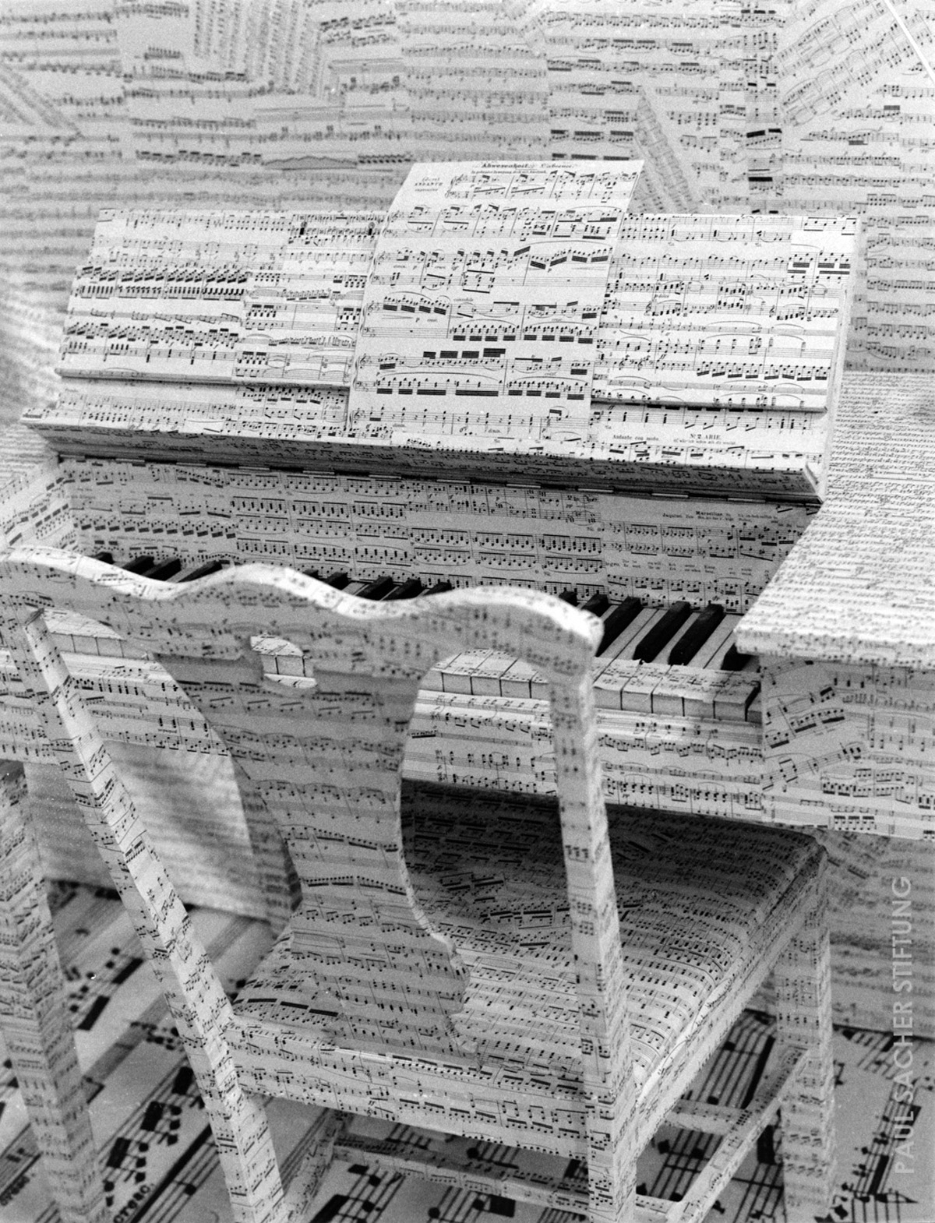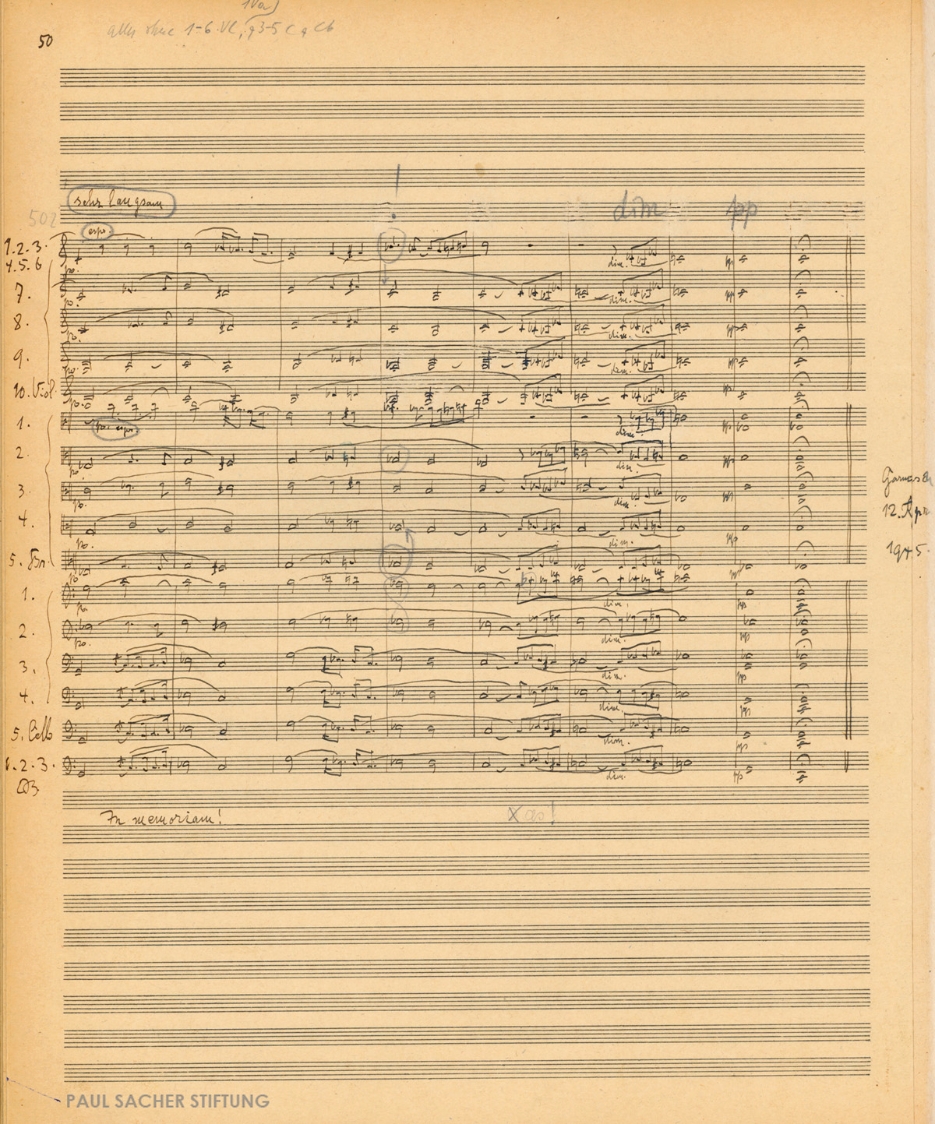NEW DATE
Owing to the coronavirus pandemic the exhibition at the Beethoven-Haus had to be postponed.
New date: 2 June to 3 October 2021
Ignition: Beethoven
Reception Documents from the Paul Sacher Foundation
An Exhibition Presented by the Paul Sacher Foundation in the Bonn Beethoven-Haus
02.06.2020, update 03.12.2020
Beethoven’s relevance to later generations of composers is uncontested, with effects both positive and negative. Even Franz Schubert is said to have asked, “Who, after Beethoven, may dare to do anything?” – all the more proof of the need to come to terms with his music. The situation in the twentieth and twenty-first centuries is more multi-layered, for the potential connections have multiplied almost immeasurably and the idea of a musical mainstream has become virtually unthinkable without Beethoven as its starting point and ultimate destination. Nonetheless, countless composers in this era, too, have responded to Beethoven, either by making references to his music or by creatively distancing themselves from him.
This is the subject that the Paul Sacher Foundation addresses in the exhibition Ignition: Beethoven and its associated book publication. Using a selection of documents from its archive, the exhibition illustrates some facets in the way that musicians have dealt with their great predecessor in their compositions, theoretical writings, and teaching. The main focus falls on written documents, such as music manuscripts and handwritten texts, occasionally augmented with audio-visual material. The items on display are divided into four thematic groups, each emphasizing an aspect of Beethoven’s reception.
Beethoven as Mentor
The classical stature of Beethoven’s music is also evident in the fact that no one seeking to master the craft of composition can afford to ignore it. It serves as a model for orchestration, functions as a stylistic paradigm, or displays an exemplary form of musical logic in its structure and design. As an acknowledged paragon, Beethoven’s music forms an ideal object of instruction. The exhibition illustrates this topic with analyses, arrangements, and other study materials.
Ideological Exaltation
Besides serving as model teaching material, Beethoven’s music has also proved susceptible to ideological co-optation. The prerequisite for this is its ubiquitous presence, which transcends any and all borders. The resultant tendency to attribute supreme symbolic meaning to Beethoven’s music opens up vast potential for identification, whether from its exemplary nature or from notions of purity and heroism. But the same tendency also harbors its potential rejection.
Reference Strategies
The third group illustrates several “reference strategies” for making Beethoven manifest in our time. One of these strategies is to “overpaint” his works, with the original more or less audible in the new one. But the most frequent technique remains the (usually brief) quotation, standing out distinctly in its new musical environment. Such quotations may fulfill a wide variety of roles. Moreover, the relation between the quoted music and its new surroundings need not be dissociative; it may have constructive subliminal ties.
Alienation and Dismantlement
The fourth and last group presents several works in which Beethoven’s music is “alienated” or “dismantled.” Here composers rebel less against the music of their famous predecessor than against the overbearing Beethoven cult. Pride of place in the exhibition goes to the classical instance of this approach, Mauricio Kagel’s “meta-collage” Ludwig van, the more so as his project was partly realized in the Beethoven-Haus itself. But other striking examples of dismantlement and illuminating contrast also receive their due.
Exhibition
Ignition: Beethoven
Reception Documents from the Paul Sacher Foundation
Curated by Felix Meyer and Simon Obert
(original date: 13 November 2020 to 2 March 2021)
New date: 2 June to 3 October 2021
Beethoven-Haus, Bonn
Bonngasse 24-26
D-53111 Bonn, Germany
Website Beethoven-Haus
Catalogue
The richly illustrated catalogue containing overarching thematic essays and detailed commentaries on the items on display is already available.
English edition
German edition
Side Events
Online tour
Video tour with the curators Felix Meyer and Simon Obert (in German)
Opening concert 1 June 2021
Online concert with members of the Ensemble Musikfabrik and works by Henry Brant, Charles Ives, Jürg Wyttenbach, Heinz Holliger, and Igor Stravinsky
Text on the program by Felix Meyer (in German)
Concert 25 August 2021
Concert with David Jerusalem, Martin Lindsay, and the Ensemble Musikfabrik
Mauricio Kagel, Ludwig van: Hommage von Beethoven (1969), concert version by Carl Rosman for two voices, two pianos, and string quartet
Concert 27 September 2021
Concert with the Ensemble Musikfabrik
Works by Cristóbal Halffter, Malte Giesen, and Anthony Cheung


